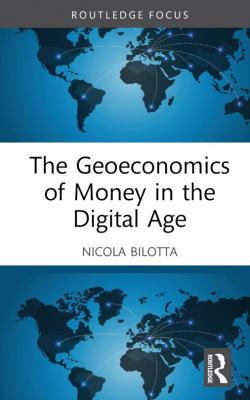The Geoeconomics of Money in the Digital Age

In a more contentious world economy, where trade and finance are increasingly interlinked with economic security and geopolitical considerations, questions arise about the underpinnings of the US dollar's global leadership. For decades, the US dollar has reigned supreme, serving as a powerful tool of US foreign policy. However, history shows that currency dominance can shift with global power dynamics. Will China or another power rise to challenge the US-led system? Will the international monetary system experience a process of fragmentation, or will a new global order emerge? Will financial technology ease such a change? This book delves into the intricate web of how three forces - economic dislocation, evolving geopolitical relations and technology – could potentially foster transformations in the international monetary system. Adopting a multidisciplinary lens, it analyses the strategic elements that might compel major international powers to instigate change or solidify the current equilibrium. While there are no definitive answers on the future, the book provides readers with the key tools to understand the major factors influencing possible changes in the international finance system.
-
Details
London/New York, Routledge, November 2024, ix, 91 p. -
ISBN/ISSN/DOI:
978-1-032-81216-8; 978-1-032-81699-9 (pbk); 978-1-003-50095-7 (ebk); 10.4324/9781003500957
Foreword by Thorsten Beck
Preface
Acknowledgements
Introduction
1. The why, what, and who: Economics and politics of an international currency
1.1 The choice behind an international currency: The economics and the politics
1.2 Why should a country care about its currency’s international standing?
1.3 Which is the current leading international currency? A snapshot
1.4 Drivers behind the US dollar global role
2. Geoeconomics, currencies, and the international monetary system
2.1 Multipolarity or partial unipolarity: A new geopolitical (dis)order
2.2 The geoeconomics of an international currency
2.3 Weaponisation and geopolitical conflicts: The risks of currency’s fragmentation
3. The cross-border implications of technology and CBDCs
3.1 Technology innovation, a driver for change
3.2 CBDCs: A bluff or the foundations of a new system?
3.3 CBDC cross-border experiments
3.4 Private digital currencies for cross-border purposes
4. e-CNY and its global aspiration: Need for speed
4.1 Domestic independency, global dependency
4.2 e-CNY and the internationalisation ambition
4.3 e-CNY, more than just money
5. The politics of the digital euro: The ambition of strategic autonomy
5.1 Is the euro an international currency?
5.2 Strategic autonomy and digital euro: A domestic dimension
5.3 The international ambition of the digital euro
6. The US, the innovator’s dilemma, and the US dollar dominance
6.1 Technology leadership, national interest, and global currency competition
6.2 US digital dollar and the innovator dilemma
7. International cooperation and CBDCs: Constraints, opportunities, and future challenges
7.1 From G7 to G20 to the BRICS: Multilateralism or globalism?
7.2 Regionalism or multilateralism: The case of Sub-Saharan Africa
8. How the international monetary system will look and why it matters
Scenario 1: A new hegemonic currency
Scenario 2: A global digital currency
Scenario 3: Fragmentation towards a multipolar international monetary system
Scenario 4: It’s all change to stay the same
Index
Topic
Tag
Related content
-
Event10/12/2024
The Geoeconomics of Money in the Digital Age
leggi tutto


